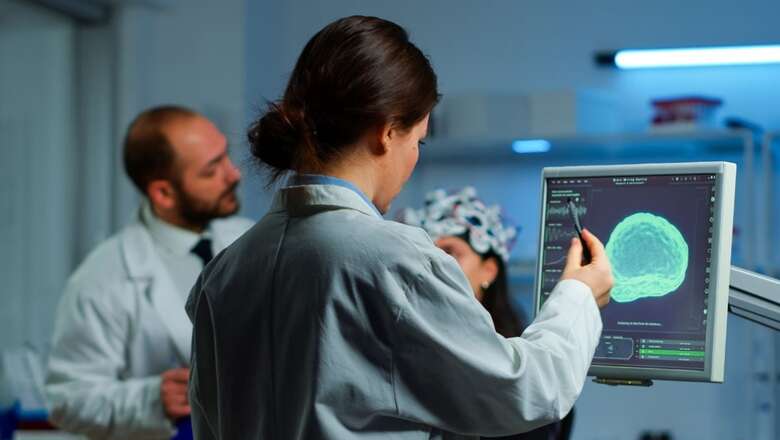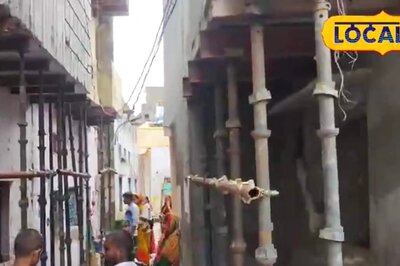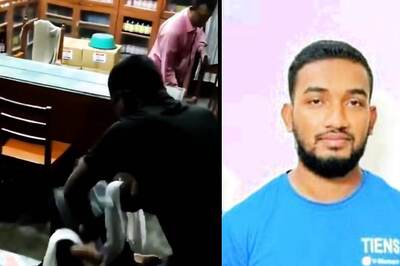
views
It was a beautiful sunny morning with a deep blue sky and crisp air when I woke up the other day in Greenwich, Connecticut while on a visit to the US. But wait! Why do I have a half-moon-shaped shadow in the lower part of my eye? It will go away, I told myself. It did not. I had to consult an eye specialist who, to my bewilderment, diagnosed it as a retina tear. My eyes were supposed to be in great shape. He patched the tear with laser treatment which did not work, necessitating an urgent retinal attachment surgery.
In the days and weeks that followed, I got a taste of the American medical system. Some learnings are worth recounting, particularly as around 450,000 Indians visit the US every year with many more in the waiting. Over 4 million Indians (Indian-Americans) live in the US – which continues to be the ‘land of opportunity’, notwithstanding a growing anti-immigrant sentiment fuelled by right-wing politicians and economic difficulties.
Visitors usually procure travel insurance (regular insurance is not available) which only covers medical emergencies but not pre-existing ailments. So far, so good! The difficulty is that despite charging a hefty premium, the insurance companies are wary of accepting even emergency claims or covering them in entirety, given the high costs, extensive paperwork and complexities involved. How high? I will let you decide!
In the US, you typically get multiple bills for a single procedure in a hospital – one for hospitalisation charges, another for aesthesia and yet another towards physician charges. Mine was a day procedure entailing a total of 8-hour stay at the hospital, a reputed one in New York. The invoices that trickled in over the following weeks added up to some $80,000 or Rs 66 lakh (6.5 million). On the positive side, apart from obtaining a copy of my bare-bone insurance and a personal undertaking to settle the dues, no advance deposit or third-party guarantor was sought. The surgeon was simply outstanding.
American health care is centred around insurance and primary-care physicians (PCP). The latter plays a pivotal role in authorising the purchase of prescription drugs, blood work, medical investigations, or specialist consultations. Very little happens without a reference from the PCP. Doctors are also called ‘providers’.
It is not easy to get an appointment with a well-established PCP and even more so with a specialist. Depending on the severity of the case, a PCP would see a previously registered patient within 2 to 7 days. However, the wait for a new patient could be as long as 2 to 6 months. Several providers simply decline new patients. Appointment with a specialist could take between 1 to 8 months. In case of a medical emergency, one has to go to a walk-in urgent care clinic (similar to an Indian dispensary) or the emergency room in a hospital.
The providers usually undertake a thorough evaluation of the patient’s ailment during the first appointment, which could last up to 90 minutes, depending on the complexity of the case. Some physicians are most courteous and even go to the waiting room to greet and escort the patients to their chambers.
The providers next call the pharmacy (chemist) designated by the patient to dispense a prescription drug. Thanks to the clout of big pharma and insurance companies, medicines are priced exorbitantly. Patients with good insurance are not overly concerned as their out-of-pocket (co-pay) expense is typically 10 to 20 dollars. The balance is settled by the insurance.
The uninsured, however, can confront a nightmare. To cite just one example, a commonly used eyedrop called ‘Bromfenec’ costs $155 in the US and $2 in India. But there is an interesting twist here. There are several websites, like GoodRx, SingleCare and Rx For Less, which offer complimentary discount coupons which bring the cost down by 20 to 80 per cent.
Online pharmacies have also sprung up to provide generic drugs at competitive prices. However, their bona fides need to be carefully ascertained. It takes 7 to 10 days to get the medicine by post. Similarly, needy patients, Americans or foreigners, can seek and obtain financial assistance from the hospital itself to cover the medical cost, in part or full.
Next comes insurance, of a mind-boggling variety, without which practically nothing moves. The uninsured, called self-pay patients, are few and far between. Their choice is to pay through the nose or just suffer. However, the insurance companies, under pre-negotiated arrangements, avail themselves of sizeable discounts and reimburse a far smaller amount which is generally accepted by the providers. There is good reason to infer that the providers inflate the invoices knowing that insurance companies would slice through them. In this ‘I am smarter than you’ game, medical costs spiral, both for patients and the state.
The world’s most powerful nation spends around 17 per cent of its GDP on healthcare. Even so, the quality is not at par with that in the developed world which on average expends under 10 per cent of GDP. It is said that the US is the only Western country which has millions of uninsured citizens. Democratic administrations (especially under Obama and Biden in recent years) have striven hard to bring larger segments of the underprivileged within the pale of insurance, in the face of spirited opposition by the Republicans who consider it a drag on the economy.
There are multiple reasons for the high medical cost that includes an aging population, malpractice insurance and research, especially for new drugs and cures. Nearly 58 million people aged 65 or more comprise 17.3 per cent of the US population (under 7 per cent in India). Their numbers will swell in the coming years.
Medical malpractice is more pervasive than perceived in the US and is the third highest cause of death. According to some estimates (precise figures are difficult to compile), over 250,000 people succumb to medical negligence annually. Around 85,000 medical negligence lawsuits are filed every year. Most of them are settled out of court with an average compensation of over $337,000 in 2017. A full-fledged court trial though expensive could result in an award, as high as, $111 million (Minnesota: Thapa v. St. Cloud Orthopedic Associates in May 2022).
Visitors should therefore, as far as possible, take care of health niggles and investigations before leaving the shores of India; obtain the best possible travel medical insurance and carry an appropriate quantity of medication along with valid prescriptions even though they are not recognised by the American pharmacies. Excessive medications could be impounded by US customs, besides evoking penalties. However, during the stay, if a visitor needs additional supplies, her best bet is to contact an online physician in the US for necessary endorsement and authorisation to a pharmacy.
That said, happy travels and best wishes for continued good health!
The author is Former Envoy to South Korea and Canada and Official Spokesperson to the Ministry of External Affairs. The views expressed in this article are those of the author and do not represent the stand of this publication.




















Comments
0 comment